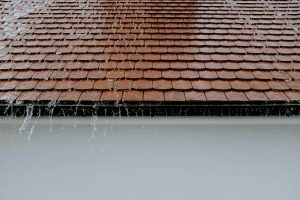A garage is more than just a place to park your car.
Over time, it often becomes a catch-all for seasonal decorations, sports gear, tools, and miscellaneous household items.
Clutter builds up, making it difficult to find what you need and creating an unappealing environment.
Implementing seasonal garage cleaning strategies keeps your space organized, safe, and functional year-round.
Why Seasonal Garage Cleaning Matters
Regular garage cleaning goes beyond a simple sweep.
Dust, dirt, and debris can accumulate and damage stored items or even your vehicle.
A well-organized garage minimizes the risk of accidents, prevents pest infestations, and maximizes available storage.
Performing seasonal garage cleaning ensures that seasonal items are easy to locate, saving time and reducing stress when you need them.
Tips for Quick Seasonal Garage Cleaning
1. Declutter Your Garage First
Start with garage decluttering tips. Sort items into three categories: keep, donate, or discard.
Be realistic—old tools or decorations you haven’t used in years likely won’t be missed.
Removing unnecessary items frees up space for efficient seasonal cleaning and organization.
2. Set Up Garage Cleaning Zones
Divide your garage into zones for tools, sports equipment, seasonal décor, and automotive supplies.
Focusing on one area at a time makes quick garage cleaning manageable and ensures no corner is overlooked.
Use labeled bins or shelving to keep each zone functional throughout the year.
3. Sweep, Dust, and Deep Clean
Once decluttered, thoroughly sweep and dust all surfaces. Start from corners and work toward the exit. Dust shelves, window sills, and containers to prevent allergens.
For stubborn stains on concrete, use a mild cleaning solution or a pressure washer. These garage cleaning tips make your space fresh and ready for organized storage.
4. Maximize Vertical Storage
Using wall-mounted racks, pegboards, and overhead shelving is one of the best garage organization ideas.
Vertical storage creates more floor space, improves visibility, and makes cleaning easier.
Hooks and ceiling storage are ideal for seasonal items you rarely use.
5. Organize with Clear Containers
Transparent bins are essential for efficient garage organization.
Clear containers let you see contents at a glance. Label each bin with contents and the date packed for easy retrieval.
Properly storing seasonal decorations or sports gear prevents clutter from building up again.
6. Optimize Work Surfaces
If your garage doubles as a workspace, keep benches and tables clear.
Clean surfaces thoroughly after seasonal maintenance and keep tools within reach without overcrowding.
A tidy workspace increases productivity and makes your garage functional beyond simple storage.
7. Inspect for Maintenance Issues
Seasonal garage cleaning is also a perfect time to check for water leaks, pests, or damage.
Test garage doors, lights, and electrical outlets to ensure everything works properly.
Addressing maintenance problems early protects your belongings and prevents costly repairs.
8. Donate or Sell Items You Don’t Need
After decluttering, donate usable items to local charities or sell them online.
This not only frees up garage space but benefits your community.
Turning garage decluttering into an opportunity to give back adds extra value to the process.
9. Develop a Garage Cleaning Routine
Prevent clutter from returning by establishing a regular garage cleaning routine.
Conduct seasonal checks each spring, summer, fall, and winter.
Simple monthly tasks like sweeping floors and organizing shelves make future deep cleans faster and easier.
10. Prioritize Safety
A clean garage is safer for the whole family.
Place heavy items in lower storage areas, and store chemicals or flammable materials in locked cabinets.
Keep walkways clear and lighting adequate.
Following safety protocols during garage cleaning protects both people and possessions.
11. Make It a Family Activity
Cleaning the garage doesn’t have to be a solo effort. Assign children age-appropriate tasks such as sorting, sweeping, or organizing bins.
Garage cleaning tips that involve the family save time and teach responsibility.
12. Use Smart Cleaning Tools
The right equipment makes quick garage cleaning efficient.
Heavy-duty brooms, shop vacuums, microfiber dusters, and sturdy storage solutions help you clean every corner without extra effort.
13. Keep Seasonal Items Accessible
Store frequently used items near the entrance and place infrequently used items in higher or overhead storage.
This strategy ensures quick access while maintaining a tidy, organized garage. These garage storage tips simplify seasonal transitions.
Conclusion
Seasonal garage cleaning doesn’t have to feel overwhelming. With proper planning, organization, and a consistent routine, your garage can remain tidy and functional all year.
NW Maids provides professional house cleaning services, ensuring your home and garage are spotless using expert techniques.
Implement these tips for quick seasonal garage cleaning and enjoy a clutter-free, organized space.
Related Posts:
- How to Organize Outdoor Spaces Before Winter: Cleaning and Storage Guide
- Spring Refresh: Cleaning Tasks You Can Skip This Year
- How to Reduce Dust and Allergens in Your Home This Summer
- Seasonal Cleaning Tips for Homes in Rainy Climates































